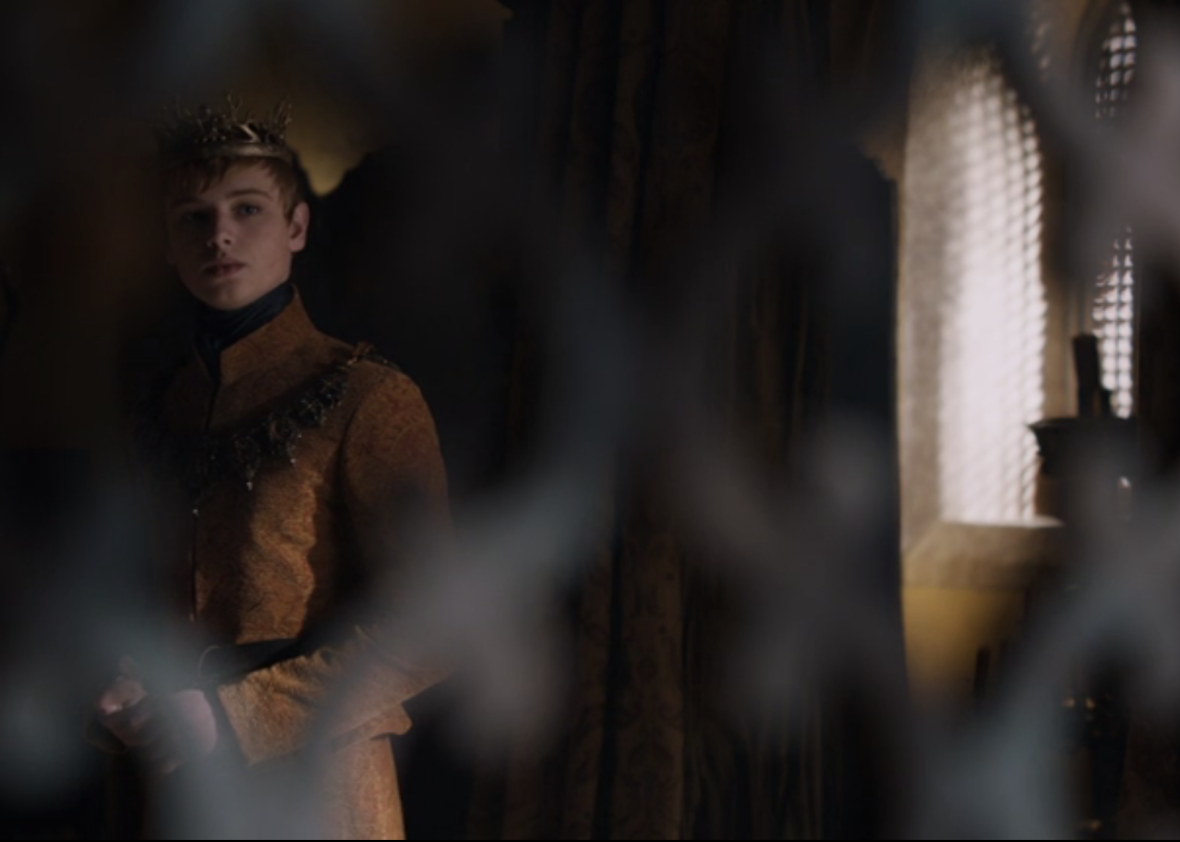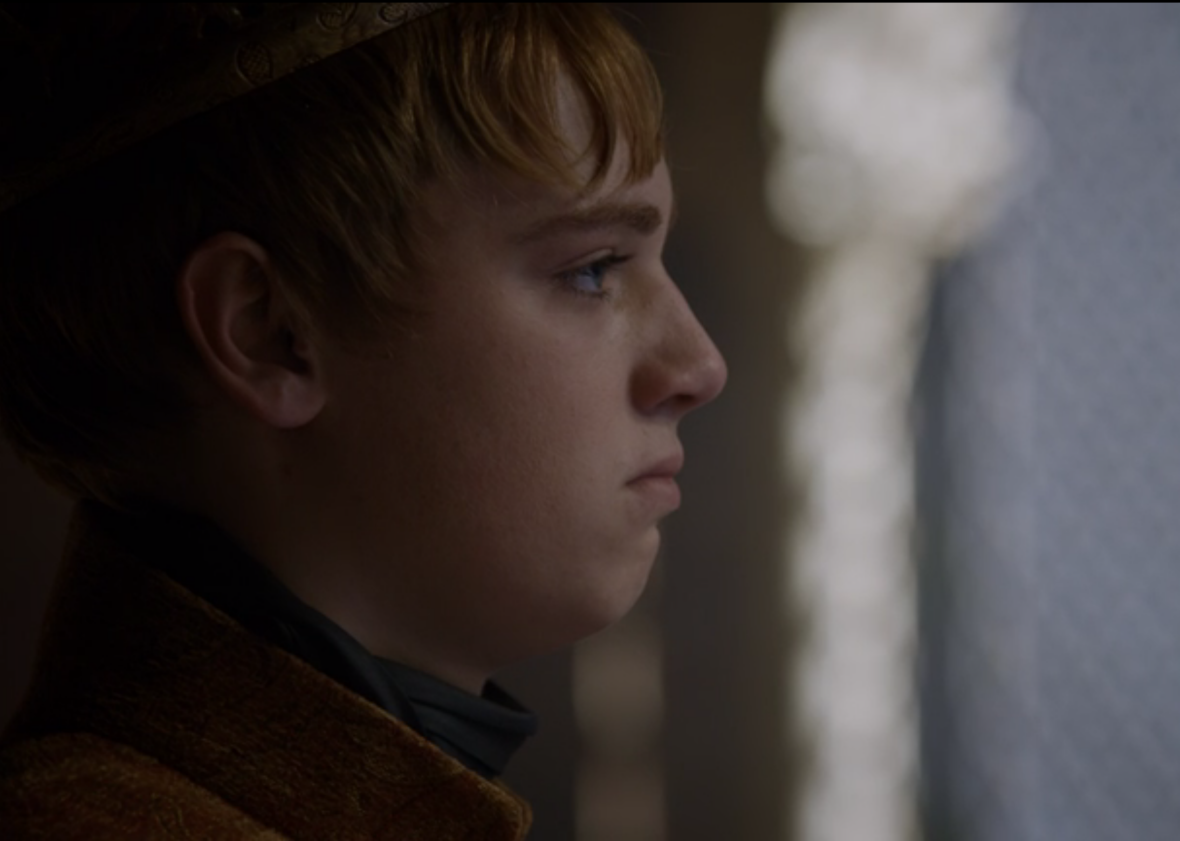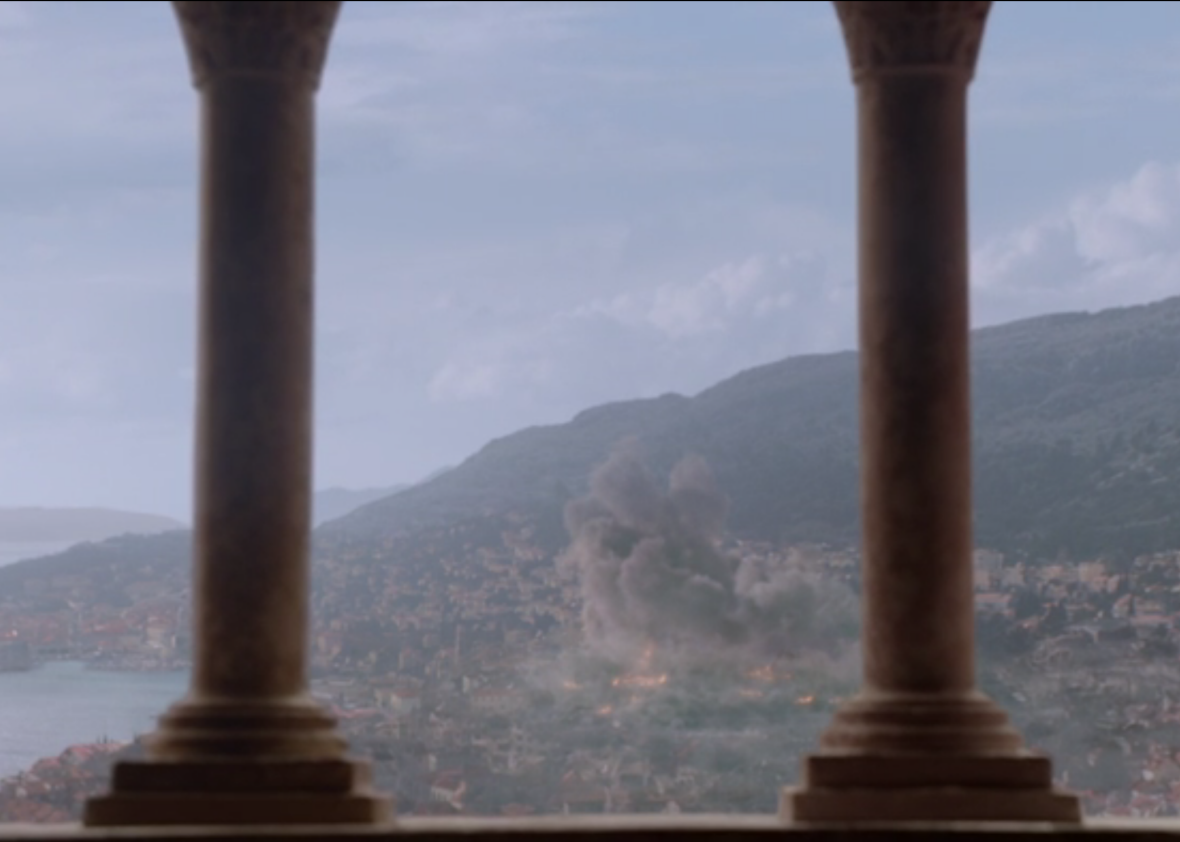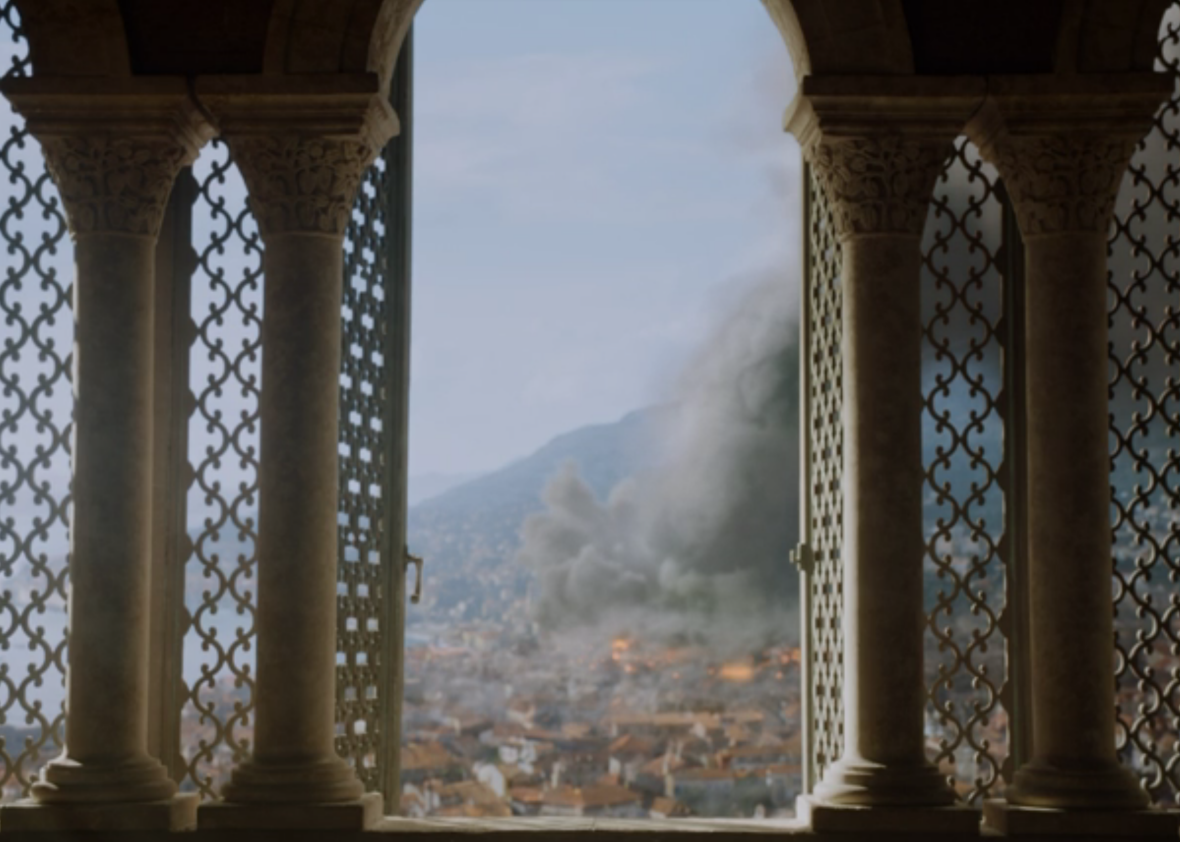Game of Thrones fans can be a contentious lot, but the sixth season went out on a note of near-unanimous approval. That’s due in no small part to the contributions of director Miguel Sapochnik, who was responsible for the season’s last two episodes, “The Battle of the Bastards” and “The Winds of Winter.” BuzzFeed’s Adam B. Vary vaulted “Winds” to the top of his ranked list of every Game of Thrones episode, with “Battle” and last season’s Sapochnik-directed “Hardhome” also in the top 10, and Vulture’s Sean T. Collins placed the same three episodes in his top 11. A Twitter poll by critic Alan Sepinwall gave the “Winds” opening sequence, depicting Cersei Lannister’s carefully orchestrated revenge plot, a Brexit-sized 52-to-48 lead over the “Hardhome” massive White Walker battle. While voting was still open, one of Sepinwall’s followers chimed in, “Whatever the results of this poll, we can all agree the real winner is Miguel Sapochnik.”

HBO
What makes Sapochnik’s direction so effective? Let’s look at the opening of “The Winds of Winter.” The episode, written by showrunners David Benioff and D.B. Weiss, has a lot of loose ends to tie up as the show gets ready for its endgame, but it starts with more than 20 uninterrupted minutes at King’s Landing, where the trial of Cersei Lannister is about to get underway. We see the major players in the show’s King’s Landing strand getting dressed, as if preparing for a day at work: The High Sparrow slips on his woven cassock, Queen Margaery is laced into her dress, King Tommen puts on his pointed crown. In successive close-ups, the High Sparrow’s and Tommen’s hands slip through the sleeves of their robes, almost clasping despite the fact that they’re miles apart, suggesting the degree to which their interests, and their fates, have become linked.
But Cersei stands apart, already dressed and staring from her balcony in the Red Keep, across the city to the Sept of Baelor, where her trial is to be held. When we last saw her, she was panicked and distraught, betrayed by her own son, who’d cast his lot with the Faith instead of his family. But now she’s calm, almost immobile as the others ready themselves. They have things to do and places to be, but she’s already done everything she needs to do.

HBO
Sapochnik brings us into the Sept itself with an overhead tracking shot, which conveys a sense of majesty and scope but also highlights the metal grate in the Sept’s floor, a grate that presumably leads all the way down to the tunnels where Cersei has relocated the late King Aerys’ wildfire. (Attentive viewers may remember the unusually ostentatious shot from “No One,” where after Cersei’s undead henchman rips off a man’s head, we’re suddenly looking up through a grate in the ground as his blood oozes downward.) In the scene that follows, Sapochnik uses both high and low angles to emphasize the Sept’s towering grandeur and the power wielded by the High Sparrow but also to point out how the massive statues of the Seven Gods dwarf the human figures below them. (Height and its relationship to power also play a key role in another of the episode’s scenes, when Daenerys Targaryen steps down to the floor of her throne room so that she can look at Tyrion Lannister face to face.) The Sparrow’s attention is directed upward, toward the heavens, but the real threat will soon explode from underneath, set in motion by a woman he’s underestimated for the last time.
Game of Thrones has made its fortune with surprise: The shocking execution of Ned Stark in the first season remains its defining moment. But in the sixth season, surprise has given way to suspense. Everyone knew Jon Snow wouldn’t stay dead, and no one seriously thought Ramsay Bolton would win the battle of the bastards, although the prospect was too horrible to dismiss outright. “Winds” doesn’t straightforwardly tell us there’s a huge stockpile of Westeros’ equivalent of napalm stashed under the Sept of Baelor until just before it goes kablooey, but Benioff and Weiss had been dropping increasingly less subtle hints for weeks. Instead of wondering what’s next, we’re watching something that’s effectively already happened. Like Michael Corleone in The Godfather’s christening sequence, Cersei has set all the wheels in motion, and now all she has to do is wait.
In an email interview, Sapochnik says that “Winds” was always going to open with a long, uninterrupted stint in King’s Landing, although the sequence did change shape in the course of production. “It was always intended that way,” he writes. “It was written as a sequence and while we did intercut more than on the page, I had always planned to shoot it as an extended and intercut montage.”
Shooting a long continuous sequence like this isn’t categorically different from shooting a more conventionally interwoven episode, Sapochnik says, although after “Hardhome,” Benioff and Weiss said they knew they could trust him with the show’s more elaborate logistical challenges. The clash of Jon Snow and Ramsay Bolton’s armies in “The Battle of the Bastards” alone took 25 days to shoot, enough time for less labor-intensive shows to put two or three episodes in the can. Even so, Sapochnik ran short of time to shoot the battle’s climax, so, like any great director, he improvised, coming up with the episode’s most indelible image: Jon Snow, valiant commander and battle-tested hero, nearly crushed by the bodies of his own soldiers, clawing his way back to the light.
Like most TV directors, Sapochnik has worked on a variety of shows: True Detective, Masters of Sex, Banshee, Fringe, half a dozen episodes of House. But Game of Thrones is different. Thrones, he says, is a “massive machine, and while you are afforded more time, you are also expected to interface and play your part in a juggernaut that stops for no one. So you buy more time but you have more immovable objects to get past.” As for the idea that as TV shows become more ambitious, they’re encroaching on the cultural landscape once occupied by feature films, Sapochnik, who directed the 2010 movie Repo Men, says that’s a mixed bag. “I think that as television is evolving, the line between TV and film is becoming more and more blurred,” he says. “This is both a good and bad thing. Good because it means the expectation is high and the desire to deliver something that works on multiple levels is stronger than ever before. Bad because the cost is going up, and as the cost goes up so does the risk and decisions about content become less risk-averse.”

HBO
Asked to point to a moment in “The Winds of Winter” that exemplifies what he brings to the show, Sapochnik singles out Cersei’s torture of Septa Unella, the only survivor (thought not for long) of the Sept of Baelor explosion. “I thought Lena’s performance and the staging of the Septa Unella scene was a pleasure to watch,” he writes. “Perfect combo of good staging, great dialogue and awesome performance.” But I’d point as well to a pair of images near the end, whose cohesion and resonance give the sequence the feel of a self-contained short film rather than an elongated subplot. As the dust settles over what was the Sept of Baelor, Cersei looks out—or, more precisely, down—at her handiwork. She steps out of the frame, and the camera lingers on her point of view, a sweeping vista of the city interrupted only by two slender columns.

HBO
As Cersei watches Septa Unella scream, Tommen looks out at the same vista, but his view is occluded by two pairs of columns and an ornate screen, whose intricate design evokes the thorny crown atop his head. Through a narrow vertical slit in the center of the frame, he can see the city, as well as the smoldering remains of the Sept, amid whose rubble are the bodies of a man he believed in and the woman he loved. Cersei is free, but he is trapped, and as Sapochnik holds on that image, we, like Tommen, can see only one way out. The stately piano and quickening cello that underscored the clockwork machinations of Cersei’s plot have quieted, and as Tommen walks out of frame, we hear only the faint scrape of metal as he removes the crown from his head and sets it aside. He returns, steps into the window, and before we know it, he is gone again, plummeting to his death, leaving us staring out at the ruined city Cersei now rules. It’s her world, and it’s in flames.
